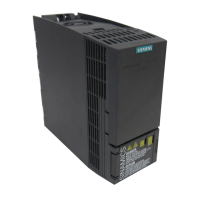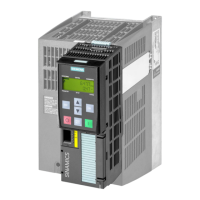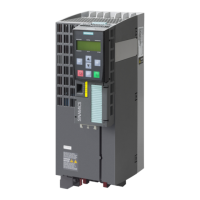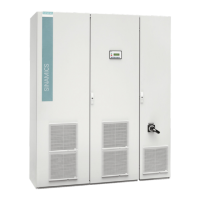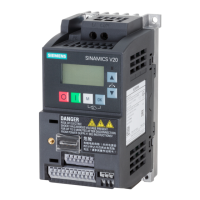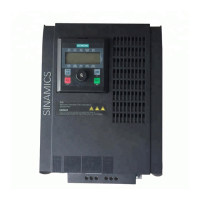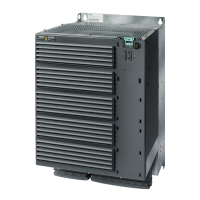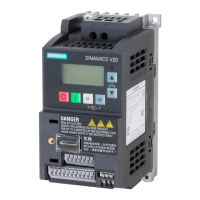3. If the motor does not rotate smoothly, or even remains stationary, increase the voltage boost
p1310 until the motor runs smoothly.
4. Accelerate the motor to the maximum speed with maximum load.
5. Check that the motor follows the setpoint.
6. If necessary, increase the voltage boost p1311 until the motor accelerates without problem.
In applications with a high break loose torque, you must also increase parameter p1312 in
order to achieve a satisfactory motor response.
You have set the voltage boost.
❒
Parameter
Number Name Factory setting
r0071 Output voltage, maximum Vrms
p0310[M] Rated motor frequency 0Hz
p1310[D] Starting current (voltage boost) permanent 50%
p1311[D] Starting current (voltage boost) when accelerating 0%
p1312[D] Starting current (voltage boost) when starting 0%
8.20.2.3 U/f control with Standard Drive Control
Overview
8IFKDUDFWHUL
VWLF
6OLSFRPSHQVD
WLRQ
9ROWDJHERRVW
QൺI
6SHHGVHWSRLQW
I
VHW
,
TBVHW
8
VHW
2XWSXWYROWDJH
2XWSXWIUHTXHQF\
&XUUHQWVHWSRLQW,
TBVHW
U
U
U
U
0
Q
8
I
Figure8-49 Default setting of the U/f control after selecting Standard Drive Control
Selecting application class Standard Drive Control in the quick commissioning adapts the
structure and the setting options of the U/f control as follows:
• Starting current closed-loop control: At low speeds, a controlled motor current reduces the
tendency of the motor to oscillate.
• With increasing speed, the converter changes from closed-loop starting current control to
U/f control with load-dependent voltage boost.
• The slip compensation is activated.
• Soft starting is not possible.
• Reduced setting options
Advanced commissioning
8.20Motor control
SINAMICS G120C Converters
Operating Instructions, 02/2023, FW V4.7 SP14, A5E34263257B AK 305
